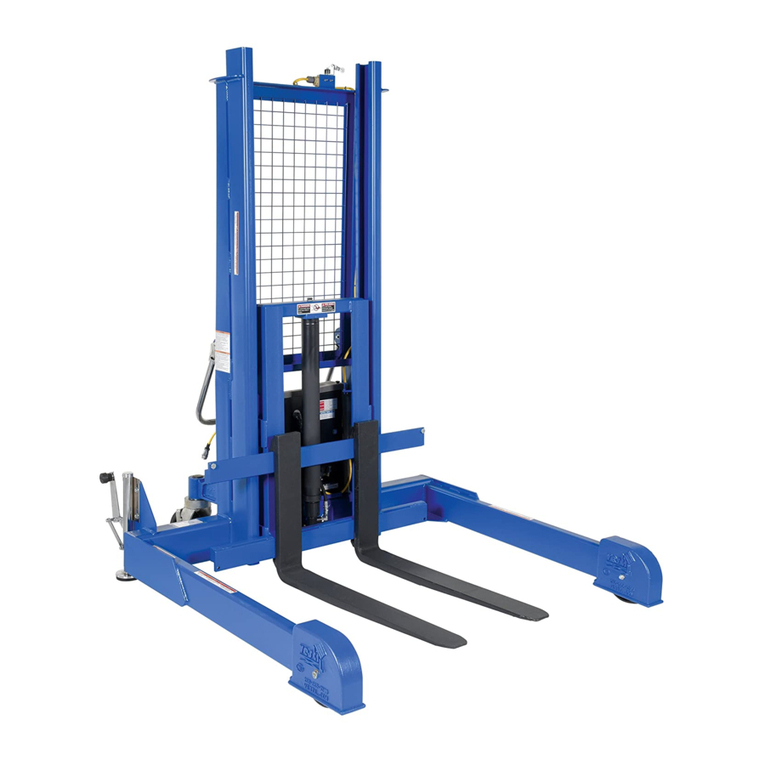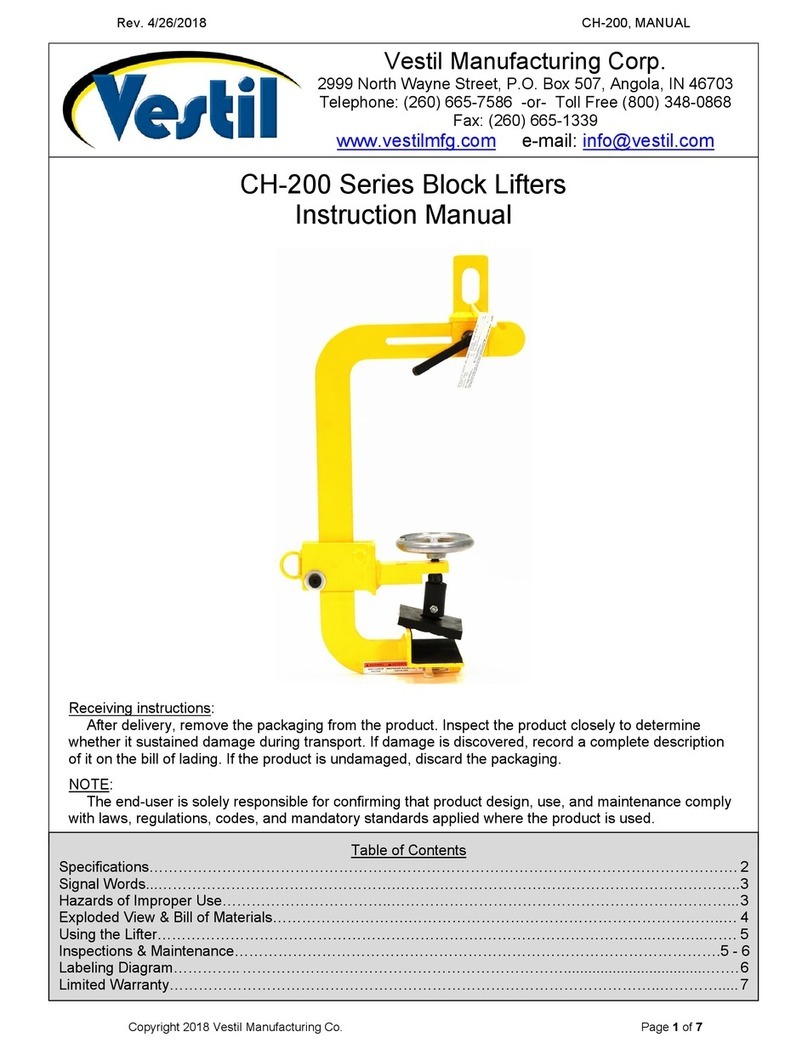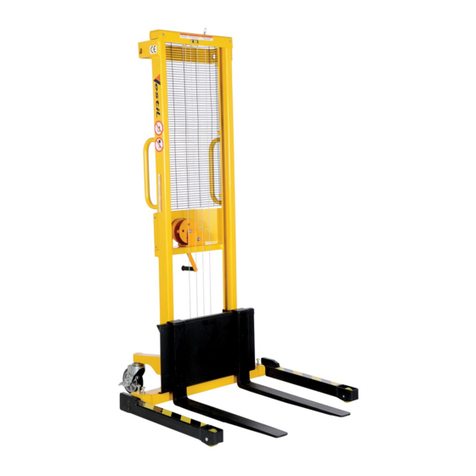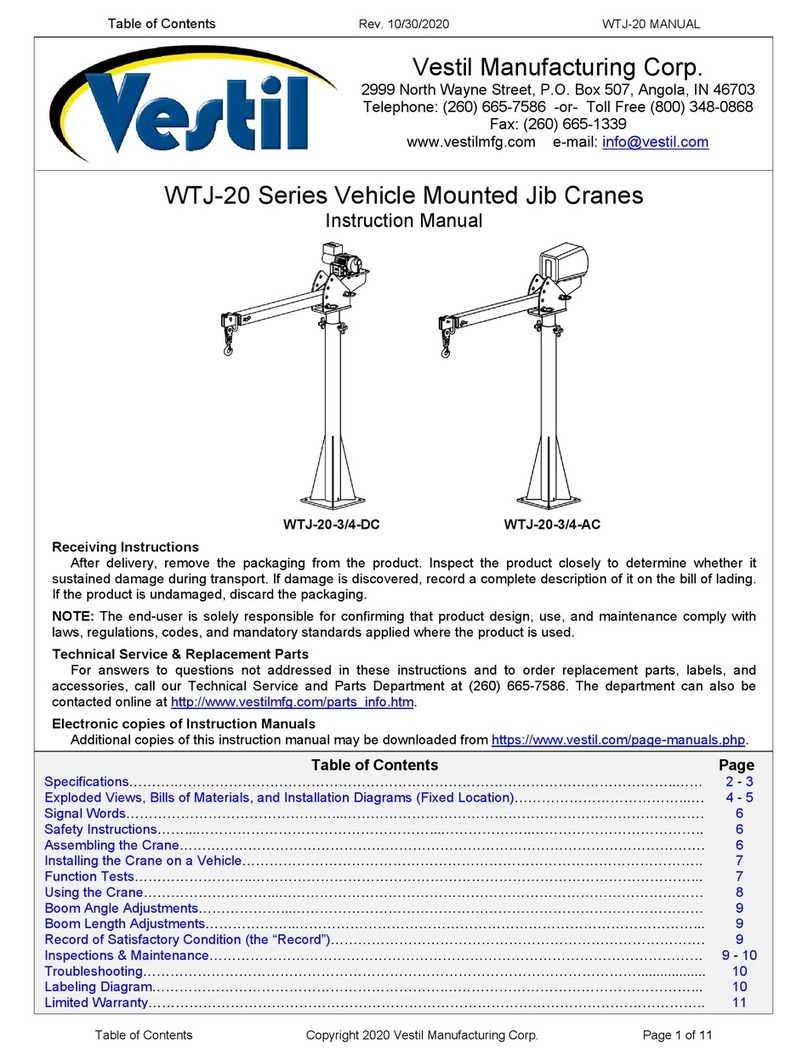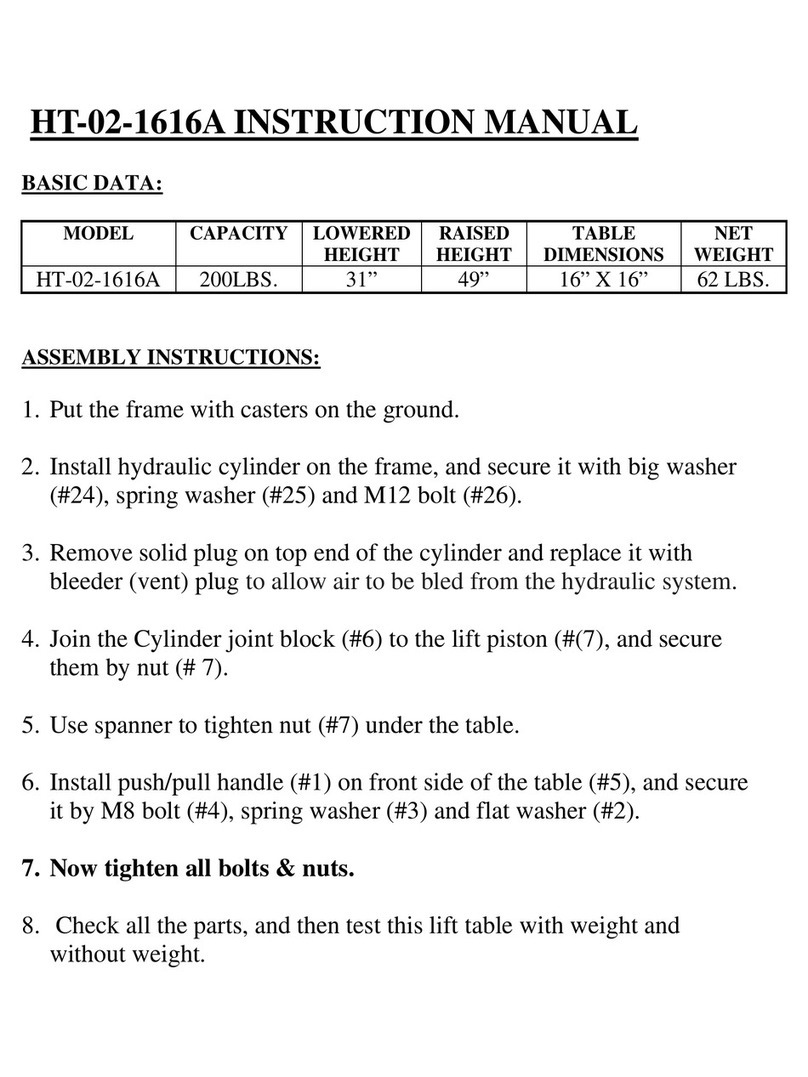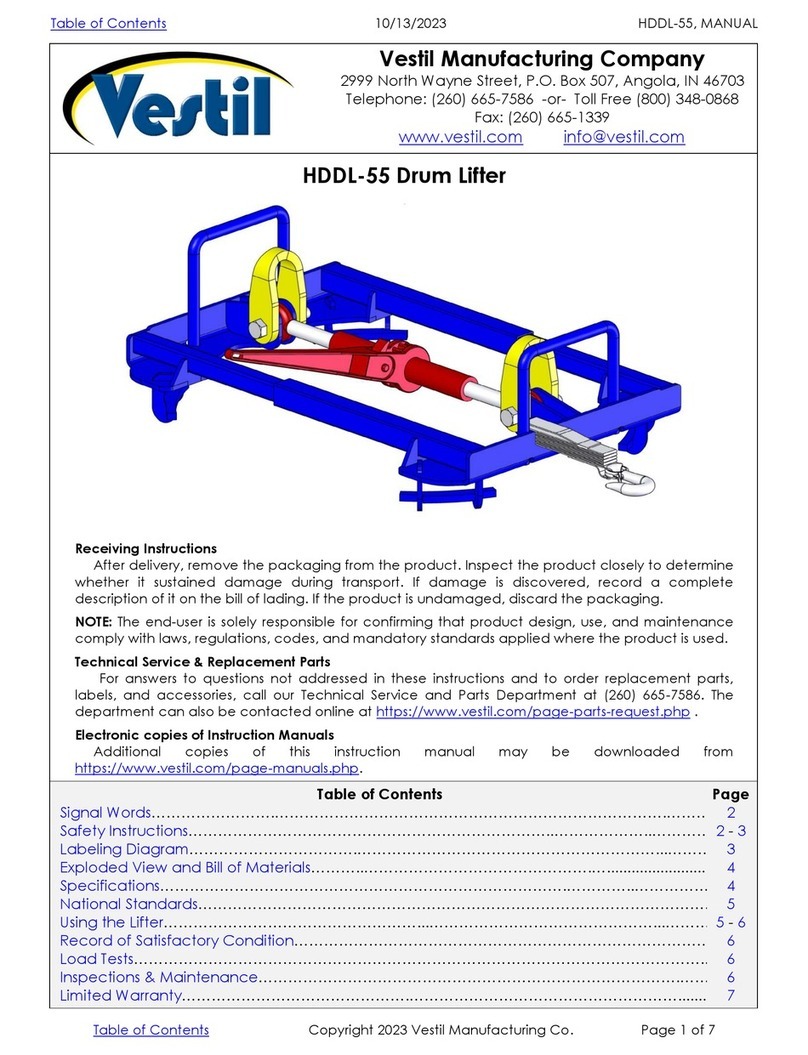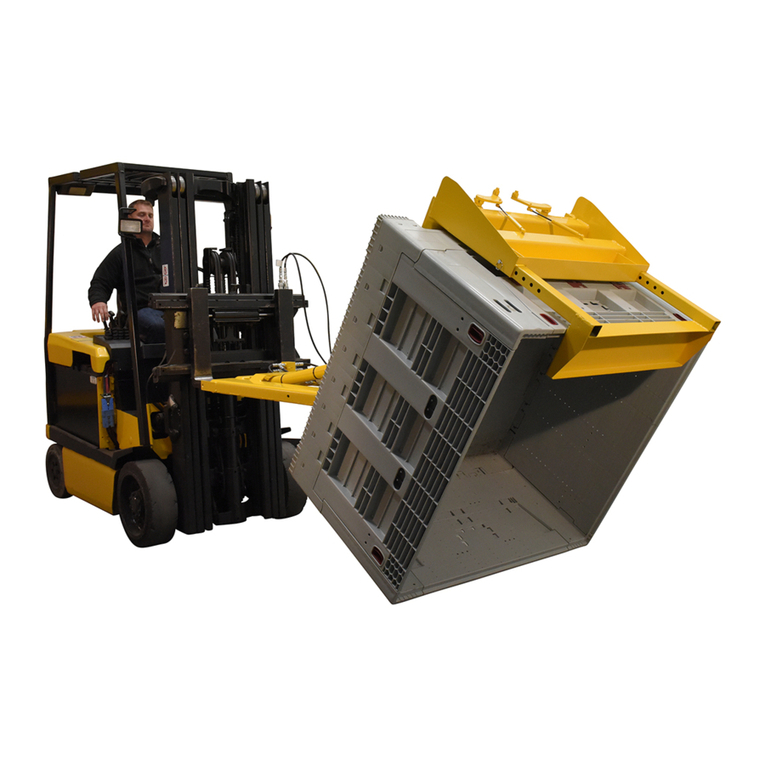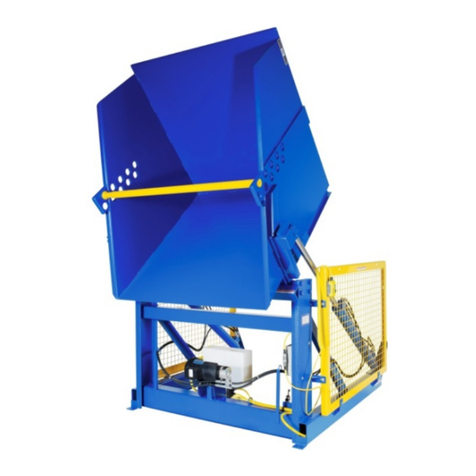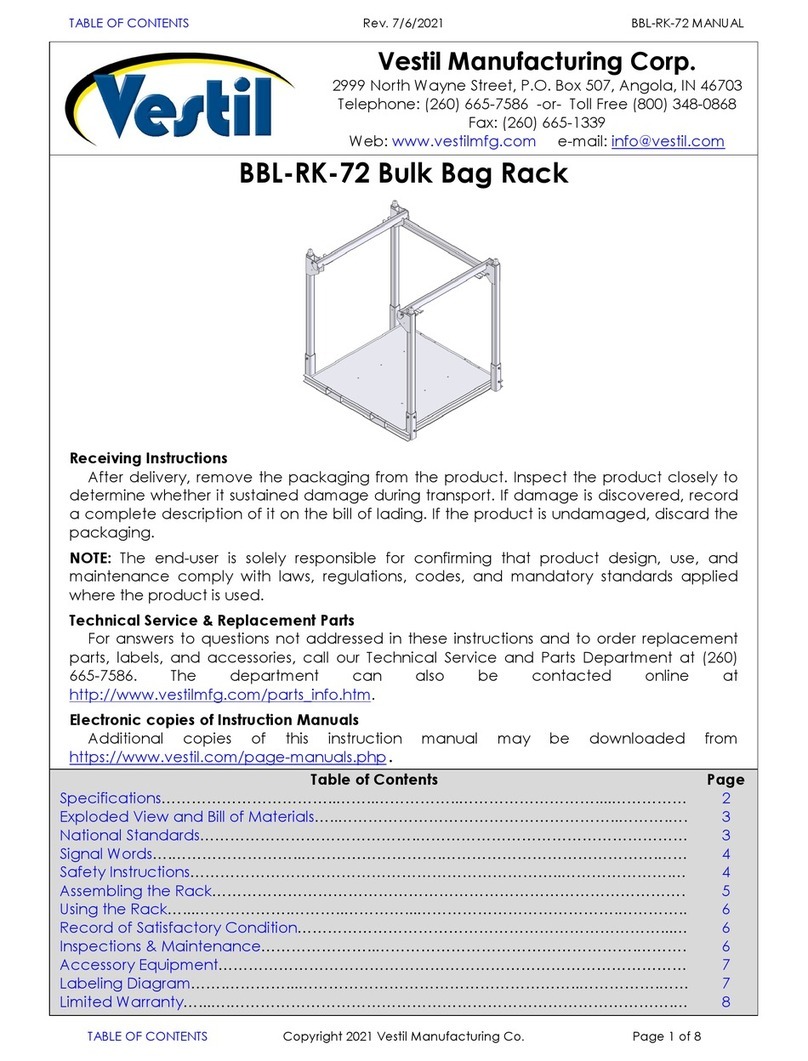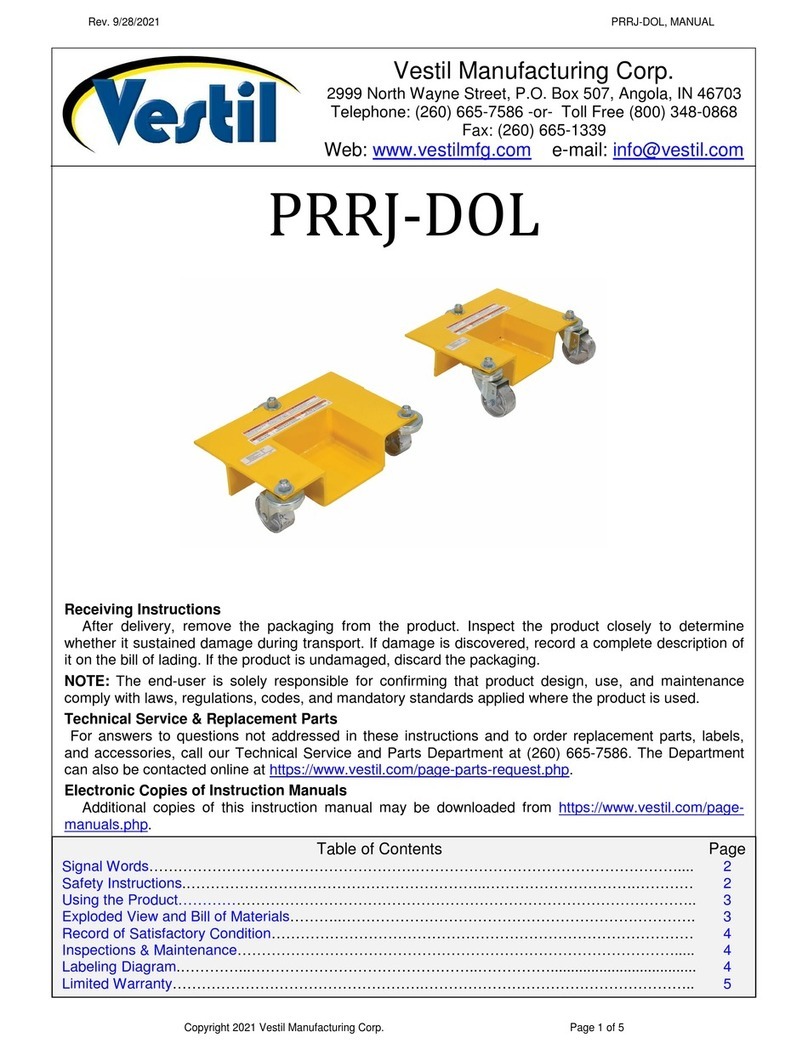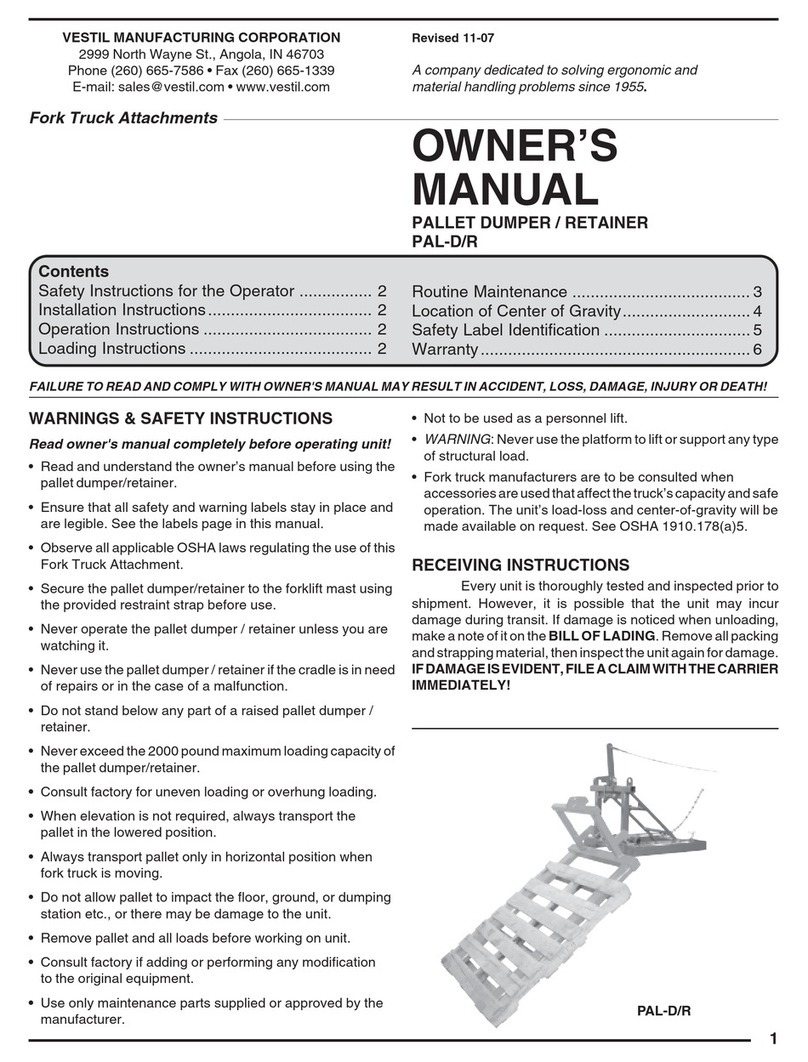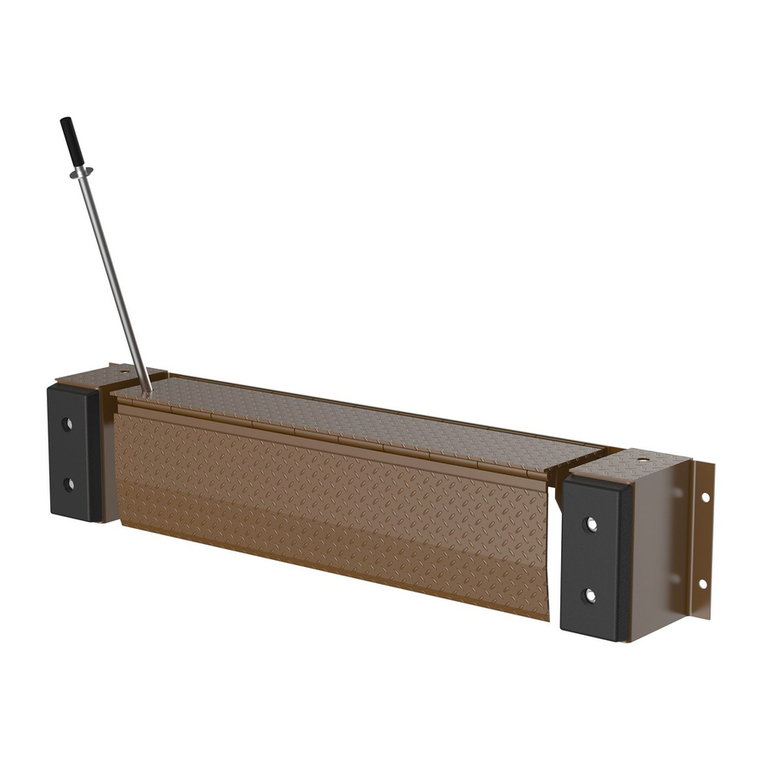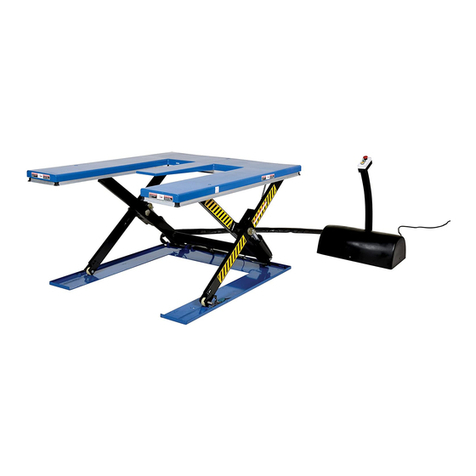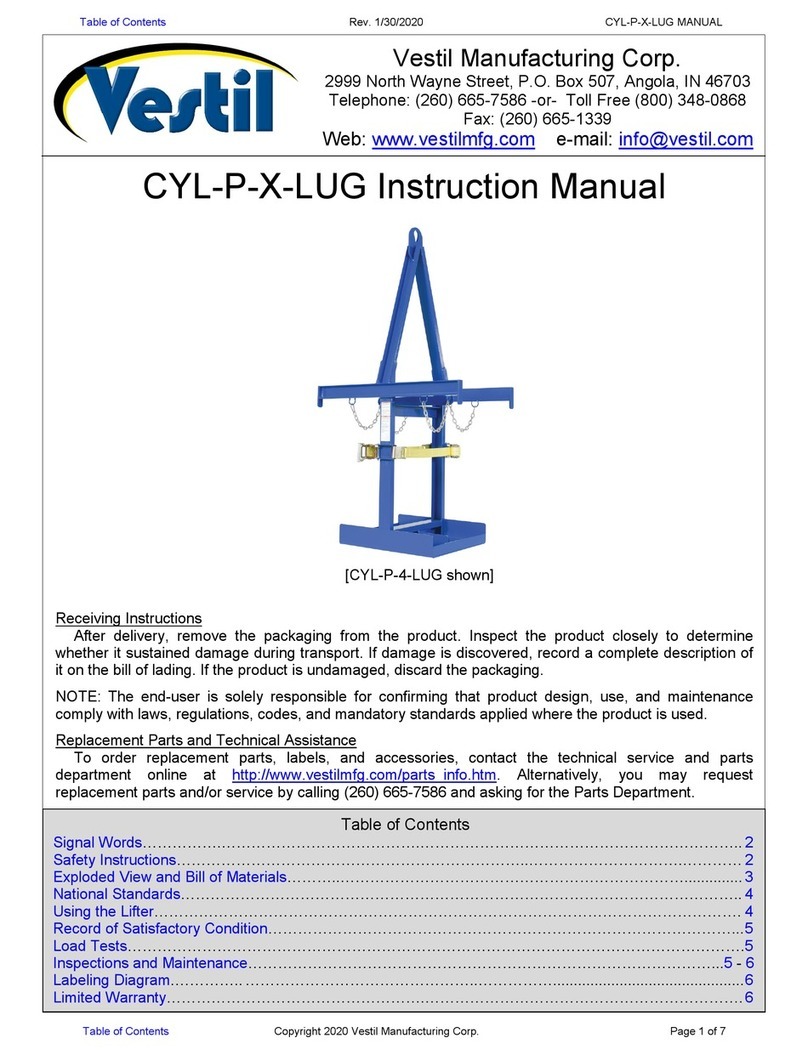
Table of Contents Rev. 12/7/2022 LM-1T-8-24-TP/HBE MANUAL
Table of Contents Copyright 2022 Vestil Manufacturing Co. Page 2 of 14
SIGNAL WORDS
SIGNAL WORDS in this manual draw the reader’s attention to important safety-related messages.
SAFETY INSTRUCTIONS
Vestil strives to identify foreseeable hazards associated with the use of its products. Material handling is
dangerous and no manual can address every conceivable risk. The end-user must exercise sound judgment
at all times. Acquire a copy of the latest version of ANSI B56.1from www.ITSDF.org. Apply all relevant portions
of Part II “For the User”. The following recommendations complement the guidance provided in B56.1.
WARNING
Material handling is dangerous. Improper or careless operation might result in serious personal injuries.
Always use this boom in compliance with all rules applied to fork truck attachments at your worksite.
DO NOT use a damaged boom. Only use the boom if it is in SATISFACTORY CONDITION (see RECORD, p. 10).
Inspect the boom before each use according to the relevant INSPECTION instructions on p. 10.
DO NOT contact electrified wires with the boom, load, or lift truck.
DO NOT use the boom if the safety chain is damaged or missing. The only function of the safety chain is to
prevent the boom from sliding off of the forks. DO NOT use the safety chain to lift loads. It is NOT intended or
designed to bear the full load rating of the boom.
DO NOT lift the boom until the restraint strap is securely connected to the carriage of the fork truck.
DO NOT attempt to lift a load weighing more than the boom’s maximum rated load. LOAD RATINGS for all
boom variants appear on page 5. Also see LOAD TESTS on p. 10.
NEVER lift this boom, or loads connected to the boom, over people.
DO NOT permit any person to stand beneath, or travel under, the boom or the load.
Inform everyone in the area to stay clear of the boom and the supported load during use.
DO NOT allow people to ride on either the boom or the load.
DO NOT use the boom if any label is damaged, missing, or not easily readable from a reasonable, safe
distance. Contact TECHNICAL SERVICE to order labels. See LABELING DIAGRAM, p. 11.
ALWAYS apply proper (fork) lift operation practices learned during your training program.
Always make sure that shackle pins (see shackles in applicable EXPLODED VIEW on either p. 3 or p. 4) are
secure before applying a load to the load hook. Tighten the screw pin before each use.
Before raising the boom from the floor AND before attaching the load to the boom, tilt the fork lift mast
away from the boom to ensure that the boom will not slide towards the tips of the forks.
ALWAYS follow the USING THE BOOM instructions that appear on p. 8 - 9. Failure to properly position a load
might cause a dangerous degree of load swing when the boom is elevated.
Only use the boom to lift loads. DO NOT use the boom to drag items.
Transport loads with the load as low as possible.
Drive, brake, and turn slowly with suspended loads to avoid causing the load to swing.
DO NOT modify the boom in any way. Modifications automatically void the LIMITED WARRANTY (p. 12) and
might make the boom unsafe to use.
NATIONAL STANDARDS
US OSHA Rule 1910.178 (29 CFR 1910.178; the “Rule”) classifies this boom as a (lift truck) front end attachment
whenever it is mounted on a lift truck. The Rule incorporates American National Standard ANSI/ITSDF B56.1 (the
“Standard”). The Standard is published by the Industrial Truck Standards Development Foundation on its website
(www.itsdf.org) where it is freely downloadable at http://www.itsdf.org/cue/b56-standards.html. Before putting
this device into service, you must acquire a copy of the Standard. Apply all relevant parts of Part II: For the User.
Lift truck users must mark/label the truck to identify the boom, show the weight of the truck and boom
combination, and show the capacity of the truck with the boom at maximum elevation with the load laterally
centered. If instructions provided in this manual conflict with the Standard, then you should apply the instructions
in the Standard. Vestil requests that you immediately share any such conflicts with its TECHNICAL SERVICE
personnel. Contact information for TECHNICAL SERVICE appears on the cover page of this manual.
Identifies a hazardous situation which, if not avoided, WILL result in DEATH or SERIOUS
INJURY. Use of this signal word is limited to the most extreme situations.
Identifies a hazardous situation which, if not avoided, COULD result in DEATH or
SERIOUS INJURY.
Indicates a hazardous situation which, if not avoided, COULD result in MINOR or
MODERATE injury.
Identifies practices likely to result in product/property damage, such as operation
that might damage the product.
